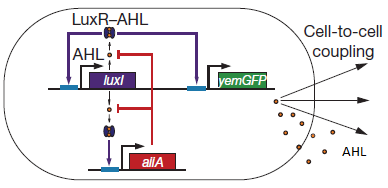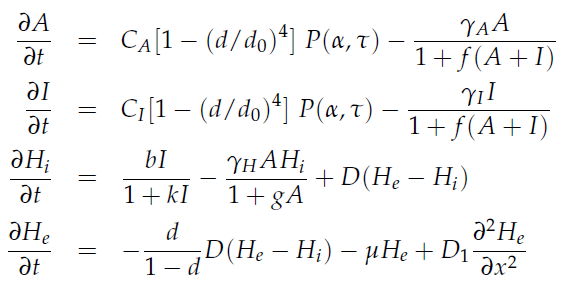Team:Wageningen UR/Project/ModelingProj1
From 2011.igem.org
(→Modeling synchronized oscillations) |
(→Modeling synchronized oscillations) |
||
| Line 37: | Line 37: | ||
'''Fig.1:''' ''Basic oscillating genetic circuit as published by Danino & Hasty.'' | '''Fig.1:''' ''Basic oscillating genetic circuit as published by Danino & Hasty.'' | ||
| - | The genes luxI and aiiA can be expressed when a AHL-LuxR complex binds to the promoter region. The circuit uses both a positive and negative feedback loop to control the AHL concentration and therefore the expression of the resulting proteins LuxI and AiiA. In the positive loop, LuxI genererates more AHL, which | + | The genes luxI and aiiA can be expressed when a AHL-LuxR complex binds to the promoter region. The circuit uses both a positive and negative feedback loop to control the AHL concentration and therefore the expression of the resulting proteins LuxI and AiiA. In the positive loop, LuxI genererates more AHL, which, together with LuxR, can form more of the activating AHL-LuxR complex and therefore stimulates even more production of LuxI and consequently AHL. In the negative feedback loop, AiiA degrades the AHL produced. In our design, aiiA is controlled by the same promoter region as LuxI, in contrast to the original design by Danino et al, who used three copies of the same promoter. |
| + | |||
| + | |||
=== Mathematical model of the construct === | === Mathematical model of the construct === | ||
Revision as of 21:40, 11 September 2011
 "
"





